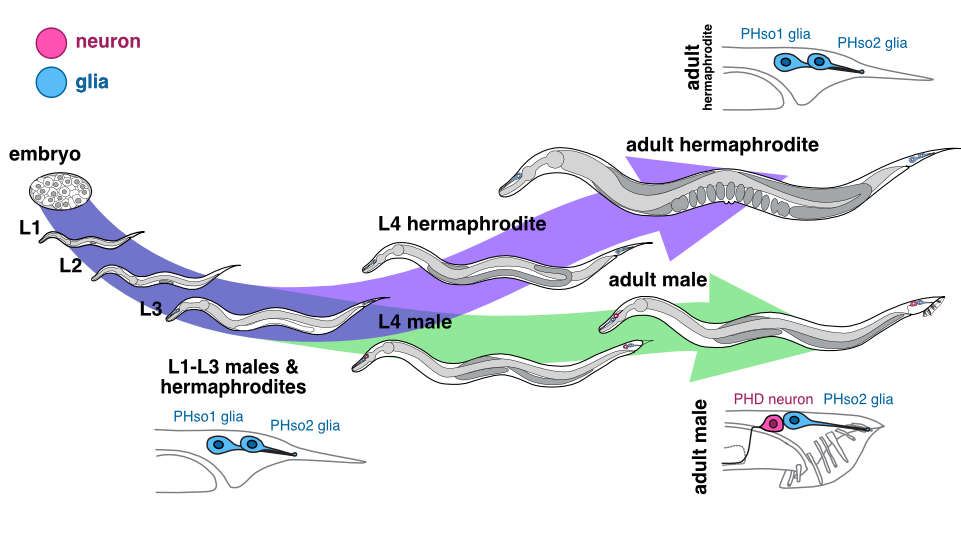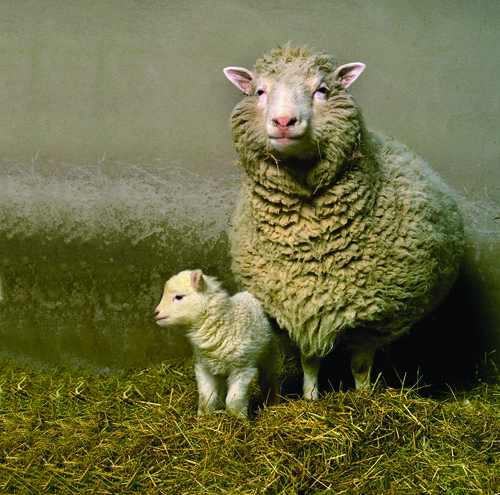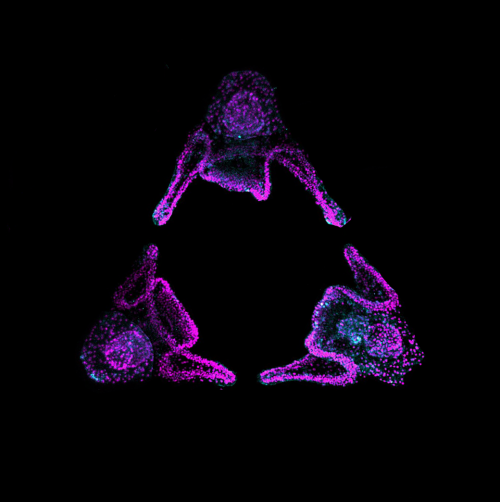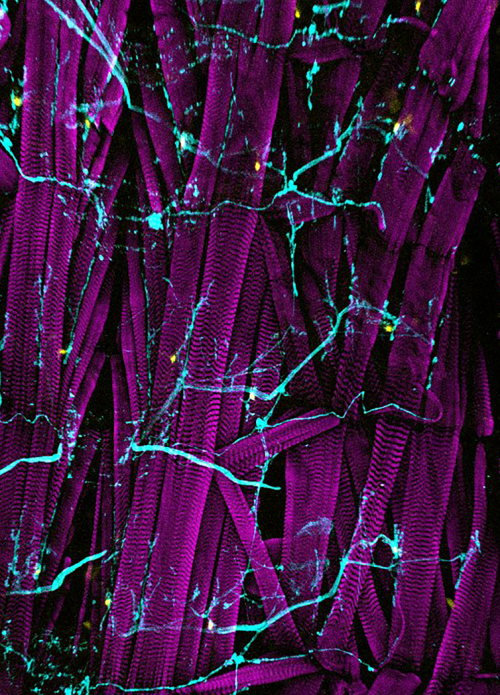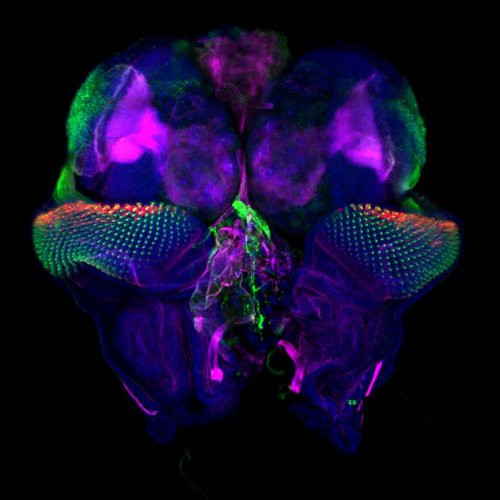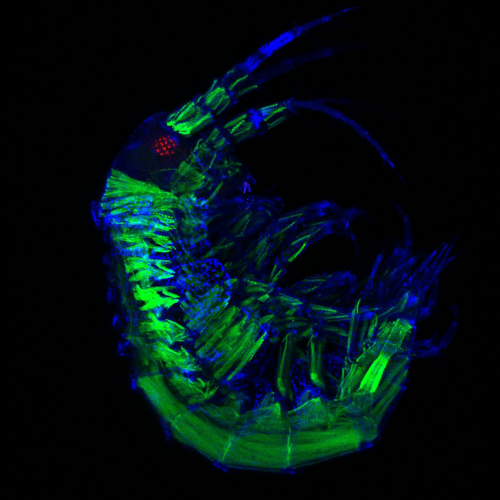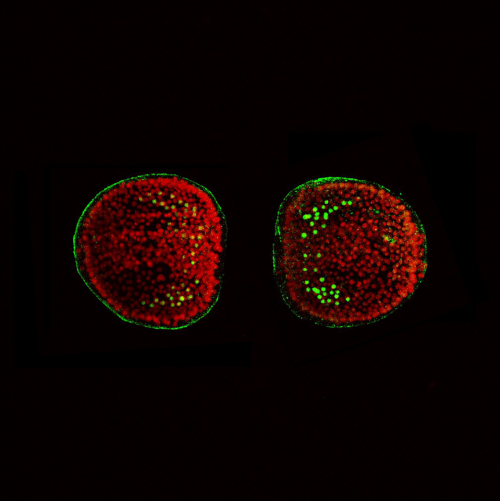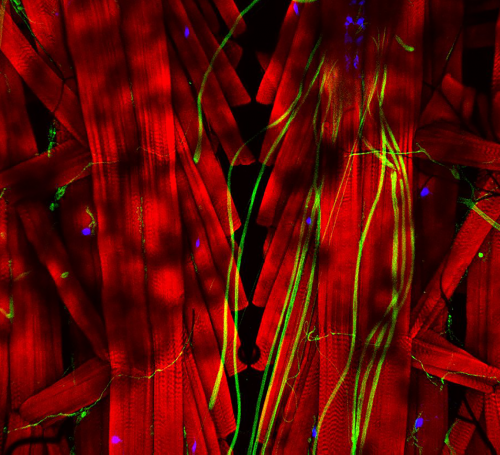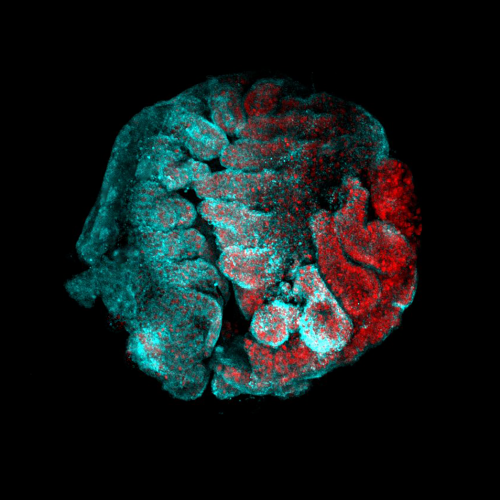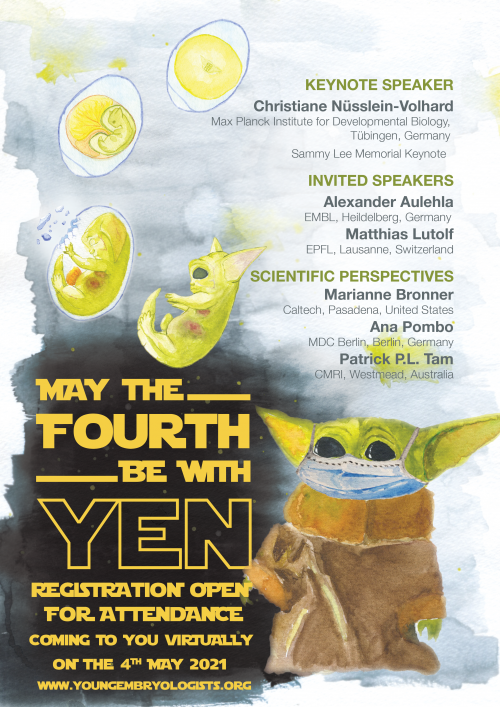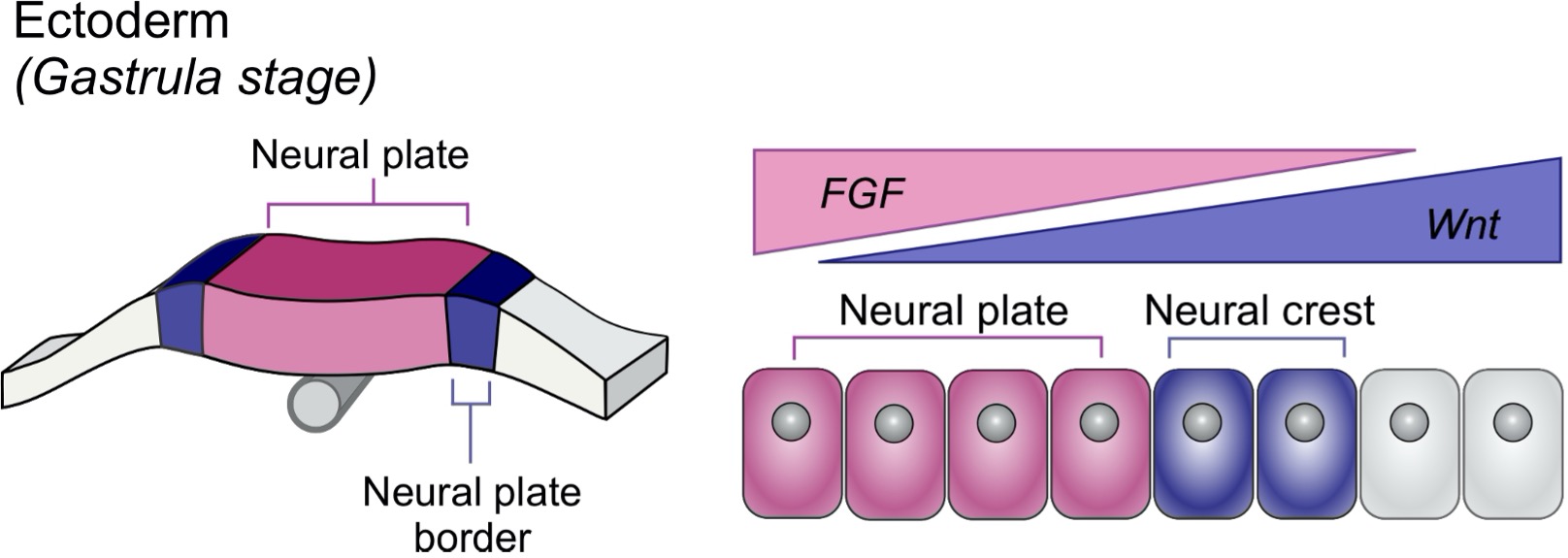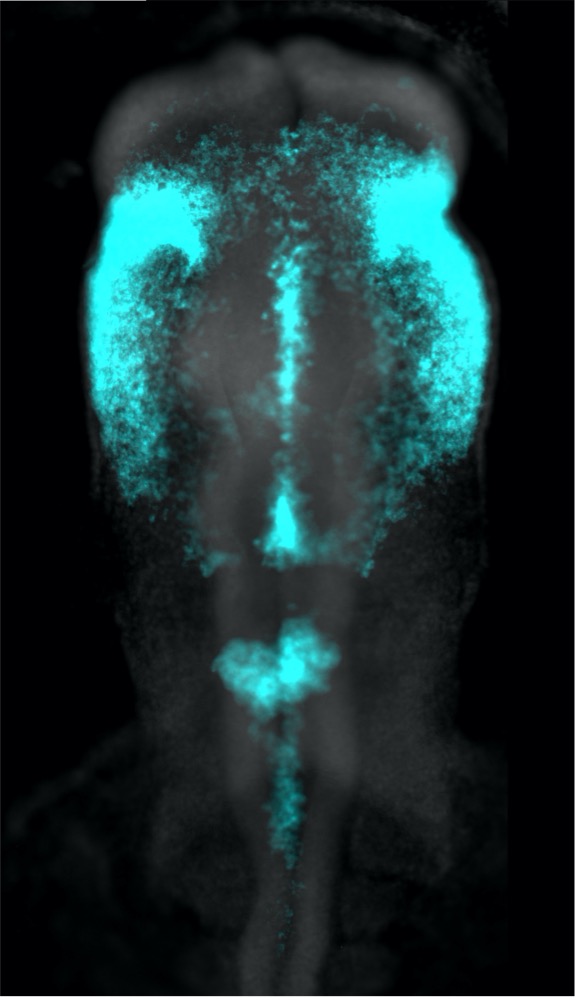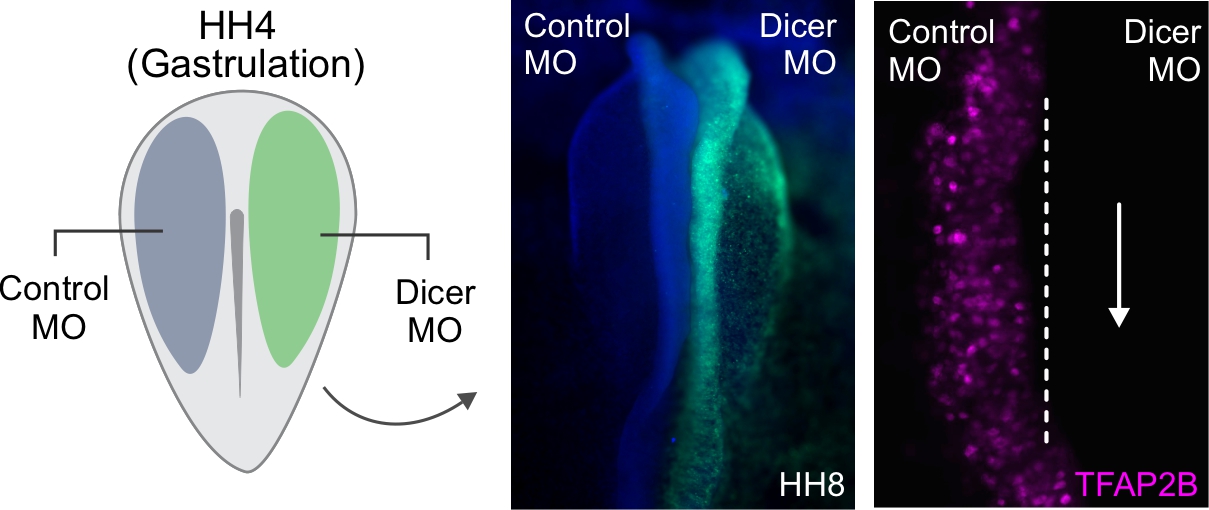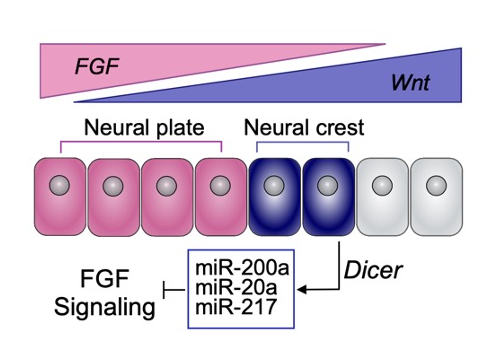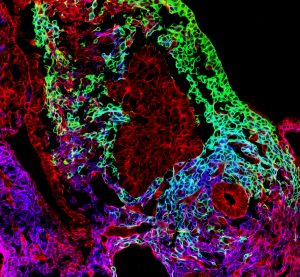An interview with Cagney Coomer
Posted by the Node Interviews, on 29 March 2021
This interview by Aidan Maartens was recently published in Development.
Dr Cagney Coomer received her PhD with Ann Morris at the University of Kentucky, where she studied zebrafish retinal development and regeneration, and is currently a postdoctoral researcher in Marnie Halpern’s lab in the Geisel School of Medicine at Dartmouth College. In 2020, she was awarded the Society of Developmental Biology’s inaugural Trainee Science Communication Award for her work with NERD SQUAD Inc, the non-profit STEM outreach organization she founded that is dedicated to inspiring the next great minds by bringing science to life. Over a virtual chat, we discussed her experiences in the lab, the classroom and the community centre, and why she thinks outreach and role models are vital to science.
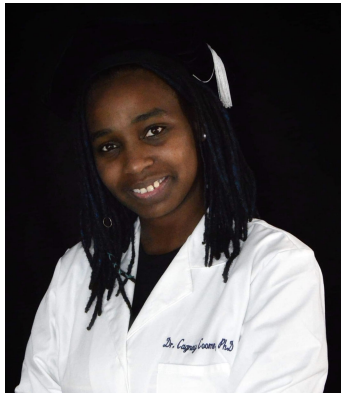
When did you first become interested in science?
I wanted to be a scientist since I was 8 years old. I used to have this dream I was going to be a marine biologist and move to Alaska to study great white shark mating in the ring of death. But I grew up in Kentucky, which is a landlocked state, and I actually never saw an ocean until I was in college. I realised it’s nothing like a bathtub: it’s big and scary, and you can’t see the bottom! It was only when I was actually in the water that I appreciated my place would be at the bottom of the food chain – the human body is not made for the ocean. So I went back to campus and asked if I could change my major.
How did you first become involved in research?
Once I’d finished my undergraduate programme, when I was interviewing for jobs I’d get responses like ‘Well, yeah, you’ve done some things in the lab, but you’re really just a glorified dishwasher!’. I knew how to pour plates, clean dishes and stuff like that, but I didn’t have a lot of really technical skills, so I went to the Bluegrass Community and Technical College in Lexington to enrol in their biotech programme specifically to get those skills. In the process, my PI and I wrote an EPSCoR grant to start an undergraduate research programme at my local community college, where we developed a technique for growing aloe vera in a petri dish, and that’s how my actual research career started.
You ended up doing a PhD with Anne Morris at the University of Kentucky – what were you working on?
First of all, I picked Ann’s lab because she had the best reputation amongst the graduate students, and I really liked my project – I actually was meant to rotate with some other labs but ended up sticking with her from the start. I first started working on calpain 5, mutations in which are associated with this really devastating autosomal retinal disease in humans. It was interesting because even though it’s expressed in lots of different tissues, the mutation (which upregulates expression of the gene) only causes deterioration in the eye, and nobody really understood why. They didn’t understand its functional role, how it worked during development or where exactly it was expressed. One of the things that I was able to determine was that calpain 5 in its regular form actually plays a protective role. It’s kind of like when it’s mutated, it’s too much of a good thing: it’s turned on for so long so what it would normally do is extended, leading to an immune response that causes the degeneration.
Then another graduate student graduated from the lab and he passed his project on to me. It was focused on the role of the bHLH-O transcription factor her9 during retinal development and regeneration, and I began by making CRISPR mutants. I first found out that her9 actually isn’t really involved in retinal development – rather, it might be more involved in maintenance. The second thing I learned was that it actually plays a stronger role in neural crest cell development and migration, so I got to leave the retina and go looking for the neural crest cells, which are just so cool. They do all these amazing things all over the body, and I got to learn all these new techniques and look at all these different cell types. It’s the cool thing about mutant analysis: you have an idea about what to expect, but you really don’t know until you make them.
Why are zebrafish particularly good models for retinal development and disease?
There’s lots of reasons, starting with their rapid development: by 5 days, you have a fully developed eye, functioning with all the cell types in there. Retina research has mainly been done on the mouse, but the mouse is diurnal, with a really rod-dominant retina. In contrast, like the human retina, the zebrafish retina is cone dominant, giving us a really good way to study cone versus rod development. Zebrafish has a high level of gene conservation with humans, and our introduced mutations often phenocopy human diseases: we can model almost any retinal disease in the zebrafish. But I think what makes it so interesting is that zebrafish retinas are capable of regeneration, so we can actually study the mechanisms that it uses to try to fix itself.
When I first got to the lab, Ann talked about how important retinal development was, and I realised how much I’d been taking my vision for granted. I hadn’t ever really thought about my eyesight, or what it would be like to have a life with visual impairment, or how these impairments affect the quality of life of millions of people. It’s really important research.
And now, after your PhD, you’ve just moved up to Dartmouth – what will you be doing there?
I’ll still be using the zebrafish as my model organism but it’s more neuroscience than my PhD: I’m going to study how right/left brain function is established and works. I’ll be working in Dr Halpern’s lab focusing on the neural circuitry in the brain and, more specifically, the habenula.
This year, you received the SDB Trainee Communication Award for your work in NERD SQUAD Inc. Why did you start the initiative and how does it work?
It all started when I got an award (National Science Foundation Outstanding Student Award) and I went up to Washington DC. There were 100 top rising young scientists picked to go, and I was the only black person there. I wondered, why is that? I mean, in Lexington, I’m the only black person at work, but I always assumed it was because I live in Kentucky – I didn’t realise it reflected a bigger picture. So it’s not just in my little bubble – this is a bigger issue broadly. And then when I would ask people why, they would say well, students of colour aren’t interested in science, or they don’t really seem to have the IQ or this or that, but all these reasons didn’t really make sense because I’m black, I’m interested, I have the IQ, I can do it. Why couldn’t any other student do it?
So I reached out to community centres in Lexington and asked them if I could host a science night to do activities with kids. I just wanted to garner some interest in my community, to show them at least why I like science, because I think science is like magic, but a magic where you get to know how it works. All my activities cost less than $20 and used materials that you could readily get in your own home. That way, kids could go home and recreate the activities at home, showing their families and their parents. When I first started, I might have had 10 kids, but after doing science night for about a month, I had 45 kids just at one community centre, and they were bringing their siblings and parents: all wanted to come and see what I was going to do.
I would ask the children, why don’t you like science? ‘School is boring, it’s nothing like what you do Miss Ceecee!’ But surely there’s no way science can be boring? ‘No, it really is boring!’ So I reached out to the elementary school in my neighbourhood, and asked if I could come shadow the science class. When I left I was like, oh, science is boring, they were right! So then the question is, why? Initially, we started partnering with the science teachers – they would teach the curriculum and we would design activities that fit into their curriculum to help get the point across. We started with fourth grade (in our city, students only get science in fourth and sixth grade, and then biology in ninth grade). I realised the reason there’s no fun in science class is because there’s no science foundation for these students to begin with – everything seems overwhelming and hard if you don’t have a good foundation to stand on.
The next year, the school voted to make STEM Lab an elective: all the grades got it once a week, the same way they got gym or art or computing. We started to design our own project-based learning activities and come all through the school year, and at the end of the year hosted a community night where the students would put up booths and teach the science to their families and their community. That gave them a way to be in control of the excitement of science. And from then, it just started to generate so much momentum.
When people ask me what we do in NERD SQUAD Inc, I say we teach kids how to think. It’s not a skill that you’re born with, it’s something you learn, and yet we treat it like it’s just innate – we don’t give our students the tools to actually learn how to use their brains.
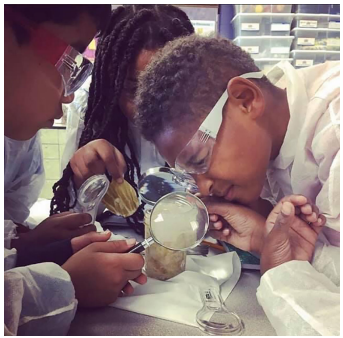
Why is it so important to make the science activities relevant to the daily lives of these children?
I’ll give an example. One of the big parts of the science curriculum is the weather, and when I went to a science class, the teacher was teaching them about avalanches. How could you perceive an avalanche when you live in Kentucky? Can you even get an avalanche with two inches of snow? It’s just so hard to grasp. But in Kentucky it rains a lot, so why don’t you start with a subject or an activity that they can relate to? I taught the teacher how to make clouds in a jar so that she could do something the kids would actually be able to relate to.
If we want people to understand why science is important, not only to us, but to the world, we have to teach it so the students can draw the connections between it and their own lives. The bigger picture is important, but we break it down into the smaller things – things they can be like oh, I understand that, I didn’t realise that was science. The kids totally freak when they find out brushing your teeth is a chemical reaction. I tell them every morning, you’re doing science when you brush your teeth – it blows their minds!
As the NERD SQUAD Inc grows and develops, some of your earliest members have now started college. It must be quite rewarding to follow their lives?
It is exciting, but sometimes it’s scary, because I actually work in this field. I’m getting all these little black girls so interested, so excited and so ambitious to be in this field, but then they have to come here and actually survive. If I’m honest, it’s a double-edged sword.
Why is it important that academia recognises the importance of outreach?
Take coronavirus, for instance: people don’t believe us, and they don’t believe us because they can’t relate to us. We aren’t coming down into the community and getting them to understand why what we do is important, and why they should believe us. I think that outreach gives us a platform: it’s a scientist’s direct action. These are the issues, this is the problem, this is how I’m trying to help, this is why what I do is important; we just don’t do enough of that, and so we become more and more distant from the communities and the people that we’re trying to help.
“Outreach gives us a platform: it’s a scientist’s direct action“
What can organisations do to help the position of underrepresented minorities in science?
Academia, for instance, has to take some steps back and actually try to create an environment supportive of students of colour. It’s not that we can’t do the work – most of the struggle that I had during my PhD was actually trying to figure out whether it is a place that I want to go and work. Do I want to spend my life trying to prove that I’m capable, trying to prove that I belong here, all the while feeling like I don’t, feeling like nobody will take me seriously and welcome me in this space? I just want to be able to show up as a scientist and be a scientist. But that’s not what I get – I have to always prove that I’m more than just a good scientist. It’s the kind of environment that puts me in positions where I literally have to say to people ‘well, that’s not appropriate, that’s not cool, why would you say that?’ Who wants to go to work every day and always have to tell people that the things they say and do make you feel insignificant and invisible? It’s hard. And on top of that it’s really hard in this field to express yourself because one wrong statement, one wrong move could ruin your whole career. You’re worried about speaking up for yourself because of how that could influence your career.
When it comes to journals and magazines, they need to do a better job of highlighting scientists of colour. I came to graduate school without ever seeing another scientist of colour. How do I know that this is a possible career if I’ve never seen anybody that looks like me? Who says I want to be the first? You can’t oblige me to think that that’s the journey I should have to take, especially when I know I’m not the first. So you should give me examples so I know what this looks like, so I know what’s possible.
So role models are just as important in universities as in elementary schools?
They are. I got my PhD in the University of Kentucky, a tier one research university. They have about 200 research scientists, and this year there’s no black faculty. I was literally the only person of colour in the whole building. It didn’t feel like there was much pressure (either internal or, for example, from funding agencies) to make a change or require institutions to do anything that would help diversity or inclusion in science. I feel like comfortable people don’t change – if they don’t need to make changes in order to get the funding, why would they care?
Do you see yourself continuing in academia long term?
Yes, I do. I think that it is hard, and it is a lot of work, but at the end of the day, I already took on this role as a role model and an example. No one asked me to do it, so now I’m here, if I have the opportunity to create space for others, I’ll create space for them.
Our final question: when you’re not doing science, what do you do?
We’re outdoors people – we rock climb, visit waterfalls, hike, and just like to be outside. New Hampshire is different to Kentucky in a lot of ways, but it’s pretty rural too, and we fit into that side of it. There’s so much water here, every turn it’s a river, a lake, a pond, a waterfall. It’s been beautiful so far.


 (1 votes)
(1 votes)